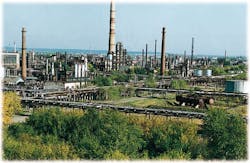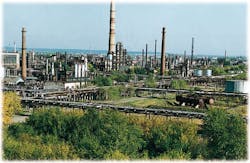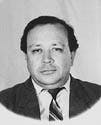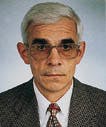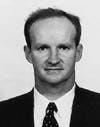Catalyst improves octane at Perm refinery
Vladimir M. Shuverov, Valery A. Krylov
Lukoil-Permnefteorgsintez
Perm, RussiaG. C. Anderson, N. L. Gilsdorf, M. Y. Kon
UOP
Des Plaines, Ill.F. J. Baars
UOP Ltd.
Guildford, U.K.
The Perm refinery (left) has a crude capacity of 300,000 b/sd and over 40 different processes. The northwestern provinces of Russia represent the principal market outlets for more than 100 refined products from here.The Lukoil-Permnefteorgsintez (Perm refinery) successfully increased its production of unleaded gasoline by replacing the catalyst in its 15,000 b/sd naphtha reformer. Using UOP's S-12 hydrotreating catalyst and R-56 reforming catalyst, the Perm refinery achieved 99.5 research octane number clear (RONC) reformate production ability, long cycle lengths, and excellent recovery from unit upsets.
Perm refinery
The Perm refinery is an affiliate of the largest Russian oil company, Lukoil. The refinery was commissioned in 1958, and it is in the North Urals region on the north bank of the Kama River. With a crude capacity of 300,000 b/sd (14.2 million tons/year), it is one of the largest refineries in Russia.To remain competitive, Russian refineries need to increase the production of high octane unleaded gasoline to meet "lead phasedown" targets. Current data indicate that the percentage of unleaded gasoline in the total Russian gasoline pool increased from about 25% in 1990 to almost 53% in 1996. Eventually, unleaded gasoline is expected to comprise 100% of the gasoline pool.
Perm refinery management developed an ambitious long-range modernization program to produce more high octane unleaded gasoline. Because reformate is the main high octane blending component for the refinery's gasoline, the catalyst replacement project focused on improving the efficiency of the reformers. Of several projects, this one was implemented first because it was a cost-effective method to quickly increase the supply of high octane gasoline. Initially, the refinery replaced the catalyst in one of its four naphtha reforming units.
Three naphtha reforming units at the Perm refinery have design capacities of 7,500 b/sd. The fourth and largest unit has a 15,000 b/sd nominal capacity of straight-run naphtha. This unit was commissioned in 1971. It includes an integrated naphtha hydrotreating section, a four-reactor naphtha reforming section, and a fractionation section.
Before the 1993 catalyst replacement, the maximum RONC of the reformate produced on all reforming units was 91, and catalyst cycles were limited to a maximum of 11 months. Periodic sulfur upsets occasionally led to a loss in performance and short cycle lengths.
Catalyst selection
In 1992, UOP commercialized the R-56 catalyst, a bimetallic platinum/rhenium (Pt/Re) catalyst on an extruded support. For its catalyst replacement project, the Perm refinery selected the R-56 catalyst for the 15,000 b/sd reformer.In 1993, UOP provided a catalyst reload plan for the reformer. In its proposal, UOP made projections for gasoline yield, cycle length, and activity for 100 RONC reformate. On the basis of the proposal, the refinery entered into a catalyst supply contract with UOP for S-12 hydrotreating catalyst for the upstream naphtha hydrotreating section, R-56 catalyst for the reforming section, and ADS-11 for the sulfur guard bed adsorbent. The adsorbent would be loaded into a vessel downstream of the hydrotreater stripper to remove any recombination of sulfur. The sulfur could form because of the anticipated high hydrotreating reactor temperature required to provide necessary reboiler duty to the hydrotreater stripper.
The supply contract also included additional UOP services to ensure correct loading of the catalyst, training of the engineers, optimum operation of the catalyst during the cycle, and successful catalyst regeneration.
Catalyst loading
The reforming unit was shut down and prepared for loading. During the turnaround, several previously identified minor hardware modifications, aimed at providing proper catalyst/feed contact and ensuring catalyst containment, were implemented.Both S-12 and R-56 catalysts are extrudates. For loading extruded catalysts, UOP recommends using a special dense loading machine which has the ability to uniformly load and closely pack the catalyst particles within the bed. Compared to traditional "sock-loading," the dense loading results in higher catalyst bed density and more homogeneous catalyst distribution. Higher catalyst bed density leads to longer cycles. More homogeneous catalyst distribution leads to uniform flow distribution and more even coke buildup, both of which accelerate subsequent regeneration procedures. In addition, high catalyst pill temperatures can be minimized, which leads to additional catalyst life.
Unfortunately, mechanical obstructions in the top section of the first two reactors of the reforming unit prevented the use of dense loading machines in these reactors. As a result of sock loading, only 85% of the originally anticipated catalyst was loaded into these first two reactors. The other reactors, including the hydrotreating reactors, were successfully loaded using the dense loading machines.
Hydrotreater section start-up
The hydrotreating section was started up on Nov. 23, 1993. Initial operation suggested insufficient sulfur removal. A joint Perm-UOP team found a mechanical problem related to the construction of vessel insulation. The unit was subsequently shut down and the appropriate mechanical modifications were made. The hydrotreating unit was restarted in late December.Table 1 [11,503 bytes] compares the performance of the S-12 catalyst with the prior hydrotreating catalyst. Compared with previous operations, the recombination of sulfur was less of a problem. By selecting the proper hydrotreater stripper operating conditions, it was possible to operate the hydrotreating reactor at much milder conditions (e.g., 320° C. reactor inlet temperature) without negatively affecting desulfurization performance. With the hydrotreater operating satisfactorily, the Perm-UOP team focused its attention on the reforming section.
Reforming section start-up
During the start-up of the 15,000 b/sd reformer in January 1994, the reformate octane numbers were found to be too low for the corresponding reactor inlet temperatures. Analyses conducted on interreactor and product samples suggested a bypassing problem in the last two reactors.The unit was subsequently shut down. Necessary modifications and replacement of some internals were done. As a result of the mechanical modifications implemented during this turnaround, the amount of catalyst which could be physically loaded into the last two reactors corresponded to only 80% of the original design catalyst volume. Unit start-up occurred on Mar. 10, 1994.
On Mar. 29, 1994, the product tests showed that the unit was capable of 99.5 RONC reformate production, was above expected feed rates, and was at or above UOP guaranteed C5+ and hydrogen yields (Table 2 [13,023 bytes]). Based on these results, the Perm refinery acknowledged that the conditions of the UOP product guarantee agreement were achieved.
First cycle operation
The first cycle lasted 589 days. During the first cycle, the Perm refinery provided key unit operating data and catalyst samples to UOP on a regular basis. Operating data and catalyst analytical results were jointly reviewed by both companies for continuous optimization of unit operations. Table 3 [13,651 bytes] reports the first cycle reformer performance compared with that of the previous catalyst. Compared with the previous catalyst, R-56 catalyst provided the following benefits:- Improved activity. Octane increased by 5 RONC with only a 5° C. reactor weighted average inlet temperature (WAIT) increase.
- Increased C5+ yield. With octane increased by 5 RONC, C5+ yield increased by 0.7 wt %. With no octane increase, the R-56 catalyst would have given a yield increase of over 4 wt %.
- Higher hydrogen yield.
- Increased hydrogen purity despite a higher operating severity (i.e., higher RONC and 20% lower hydrogen-to-hydrocarbon ratio).
- Excellent stability. Even though the unit was operating at higher severity, the R-56 catalyst life was 70% longer than that of the previous catalyst.
- Improved ability to recover from sulfur and water upsets.
Catalyst regeneration
After 20 months of operation, the R-56 catalyst was ready for regeneration. The S-12 catalyst did not yet require regeneration. The 15,000 b/sd reformer was shut down in September 1995. Perm operations staff and UOP technical representatives highlighted the key differences between Perm's standard bimetallic reforming catalyst regeneration and UOP's regeneration: caustic management, severity of carbon-burn, oxidation conditions, and catalyst reduction.Second cycle operation
Thus far, the unit has performed satisfactorily during the second cycle. The average reactor inlet temperatures have been held between 490 and 495° C. to give reformate octane numbers in the 95-96 RONC range. At the time of writing, the second cycle was already over 570 days.Subsequent Perm projects
Fig. 3 [26,517 bytes] shows the changes to the motor gasoline slate for the Perm refinery from 1992 to 2000. Improvement projects, such as the preceding catalyst replacement, give the refinery ability to expand to 80% high octane unleaded gasoline in the year 2000.The preceding reformer load project provided valuable experience to UOP and Perm for future projects. In fact, two more units at the Perm refinery have been reloaded with S-12 and R-56 catalyst. The second unit was regenerated after 869 days on stream, and the third unit has been on stream for 580 days, with no apparent signs of catalyst deactivation.
The Perm refinery is also implementing solutions to increase yield and improve the quality of other light distillate products, in particular, low-sulfur diesel oil production, to meet the most stringent world standards.
The Authors
Vladimir M. Shuverov is the chief engineer for Lukoil-Permnefteorgsintez. He has spent all of his career at Lukoil-Permnefteorgsintez where he started as a process engineer in 1973. He holds an MS in chemical engineering from Perm Politechnical University. He is a member of the American Institute of Chemical Engineers.
Valery A. Krylov is chief of the Lukoil-Permnefteorgsintez research center, where he has held various positions since 1972. He holds an MS in chemical engineering from Perm Politechnical University. He is a member of the American Institute of Chemical Engineers.
G. C. Anderson is the product manager for catalyst in the Naphtha Technology Business Group at UOP. He has been with UOP since 1978. His other assignments include technical services, process development, and catalytic development.
N. L. Gilsdorf is director of sales and service for UOP's former Soviet Union sector. He has worked for UOP for the past 20 years in various capacities, including Platforming operating services, senior manager of research and development for catalytic reforming, and manager of marketing services. He has a BS in chemical engineering from Purdue University and an MBA in international business from Northwestern University.
M. Y. Kon is a technology specialist in the Naphtha Technology Business Group. Prior to joining UOP in 1993, he worked 25 years in the Russian Academy of Science and oil refining industry. He has published more than 50 papers, brochures, and books. He holds an MS in chemistry from Moscow State University and a PhD from Moscow Zelinsky Institute of Organic Chemistry.
F.J. Baars is the technical manager of UOP's Guildford CIS Customer and Service Group. He graduated from Delft University of Technology, Netherlands. Prior to joining UOP in 1987, he worked with Royal Dutch Shell as a process engineer.
Copyright 1997 Oil & Gas Journal. All Rights Reserved.
